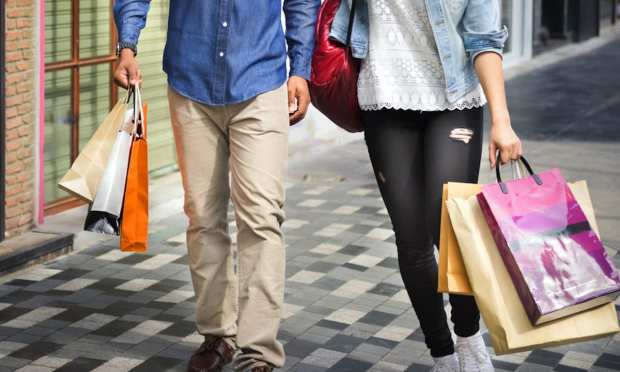Retailers Find New Value In Old Locations Via Foot Traffic Data

It’s been more than 100 years since Mark Twain said “reports of my death have been greatly exaggerated” – and yet today, that famed quip is in some ways relevant to those who have been eulogizing malls and other traditional brick-and-mortar retail spaces.
As much as COVID-19 accelerated a digital shift that was already happening before the pandemic changed the world, it also forced surviving retailers to adapt in unprecedented ways and to re-examine their entire business model. The result has been a major rethink of the true value and purpose of the modern retail location, all wrapped in the widespread embrace of omnichannel retailing.
“I think you’re going to see a lot of things that people had expected to be long-term negatives for offline retail actually turn into long-term positives,” said Ethan Chernofsky, VP of marketing for Placer.ai, a California-based tech firm that does advanced foot traffic analytics for retailers, commercial real estate firms and municipalities.
Not only are retailers looking to improve the newfound logistical concerns they now face, like enabling space for BOPIS (buy online, pick up in-store) or streamlining distribution, but Chernofsky told PYMNTS that they’ve also become increasingly aware of the costs involved in handling returns of purchases made online – and the benefits of having somewhere to take them.
For smaller, growing brands, he said there’s also a growing appreciation for the value of your store being seen – or, as Chernofsky called it, “getting eyeballs.”
“When you think how much people are paying for a click online, and then compare that to how many people are walking through a mall or major city or shopping area, [there’s a lot of] value that comes from a physical location,” he said.
And when you take this enormous brand value and combine it with the logistical and fulfillment benefits of brick-and-mortar locations, said Chernofsky, the calculus of omnichannel retailing changes. “We expect this to become a much bigger norm as more companies look to gain more value from their physical location,” he predicted. “So more brands want fewer stores, but they still want stores.”
Reimagining Retail
By deeply analyzing the movement of 30 million anonymized mobile phone users, Placer is able to produce highly detailed foot traffic reports affecting over 650 retail brands at 300,000 locations across the U.S.
“Everybody is talking about omnichannel, and leveraging online to strengthen offline, and offline to strengthen online,” noted Chernofsky. “But I think we’re going to start seeing far fewer companies having 800, 900, or 1,000 locations, and many more having like 50 to 100.”
If he’s right, the process of selecting those locations will become even more important, as retailers decide whether to stay put or move elsewhere; how and why their co-tenants in a particular location affect them; and how their splays of physical space are used for the greater good of the company, including the creation of mini-showrooms or distribution centers.
“And so all of a sudden, the fact that you have a [physical retail] location becomes more than just having a place where someone makes an actual purchase – it becomes about what the actual location enables,” Chernofsky said.
It might seem far-fetched at a time of galloping eCommerce advances and the dominance of Amazon, but Cherofsky said it’s already happening. “A lot of companies are cutting their wholesale contracts because they realize that the brand relationship is maybe the most important thing in many sectors, especially apparel,” he said, pointing to the increased embrace of direct-to-consumer (D2C) sales practices at Nike, Adidas and Under Armour.
Ultimately, it’s a combination of events that will keep savvy retailers ahead, including a cohesive strategy, some sort of attraction to draw people in, and finally, the right location. “And if I’m going to have locations, I might as well maximize their value to make my overall business stronger and better,” noted Chernofsky.
On the Precipice of Change
“Something as simple as one tenant can change the entire fit for a mall,” Chernofsky said, pointing to the sweeping impact that bringing in a co-working space rental firm like Industrious can have on a retail property, or the addition of residential housing. “The crazy thing is, once you start reimagining what retailers fit, all of a sudden a lot of locations that we were convinced were done for might actually have more life to them,” he noted.
By that rationale, and with a surge in off-peak foot traffic provided by office workers or nearby residents, Chernofsky said that malls start to make more sense for things like pharmacies, grocery stores and updated food courts with fresh items. Other retail reimaginations could involve companies like Black and Decker opening 30 locations in core markets, where people could come in and try power tools or take a class in an Apple Store-esque version of hands-on retail.
“It’s not that crazy, and it actually can provide a lot of value because people will come and buy products there,” he said.
As far as who is buying into this by-product of foot traffic analysis, Chernofsky said it’s never surprising who’s looking to utilize more innovative technologies — and it’s almost always the brands that are doing well. What is surprising, though, is the interest Placer has gotten from individual communities looking to tap into foot traffic data.
“It was not [a category] that we expected, but the surprising thing was realizing that municipalities are trying to attract retail. They’re trying to attract employers,” he explained. “They’re trying to tell the story of their city and why it’s exciting and why different kinds of business-types should want to be a part of it.”
